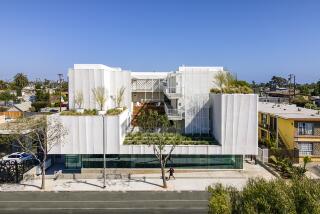Opinion: Yes, we need more housing, but how much can L.A.’s built-out neighborhoods handle?
To the editor: The proposal by state Sen. Scott Wiener (D-San Francisco) to encourage the construction of dense housing near mass transit would in some cases overturn local zoning rules to make that happen. (“Get ready for a lot more housing near the Expo Line and other California transit stations if new legislation passes,” Jan. 4)
I have enjoyed living in dense cities, but I have some reservations about what we might be in for here. Mexico City, Sao Paulo and Delhi are in the 20-million plus population range, and those metro areas are growing. Most of us don’t want that here, but it is inevitable if we accommodate ever more growth. This Wiener bill would be a step in that direction.
True, people have to live somewhere, but they don’t have to compromise established neighborhoods. What should we do when too many people want to live here?
Peter Devereaux, Long Beach
..
To the editor: Transit-oriented design is a well-known idea and practice that should be more strongly encouraged in Los Angeles.
Several decades ago, a related proposition was considered for the Los Angeles General Plan. It encouraged higher density along major streets, while protecting existing density in the neighborhoods behind. A remarkable increase in transit access makes this idea even more important now.
Previously, the buses were noisy and highly polluting, and the metro rail system was an idea not yet extending across the whole city. Now, the transit systems are less irritating and health-threatening, and the numbers of users can be catalytic, inspiring more commercial and retail uses at ground level with apartments above. Meanwhile, the neighborhoods, protected from density change, can benefit from locally enhanced shopping and services nearby on the major streets.
Imagine also the practical strategy to improve pedestrian life with tree-shaded sidewalks, well designed and safe bus stops and storefronts that enhance sidewalks.
Robert S. Harris, Los Angeles
The writer is a professor emeritus of architecture at USC.
Follow the Opinion section on Twitter @latimesopinion and Facebook
More to Read
A cure for the common opinion
Get thought-provoking perspectives with our weekly newsletter.
You may occasionally receive promotional content from the Los Angeles Times.










